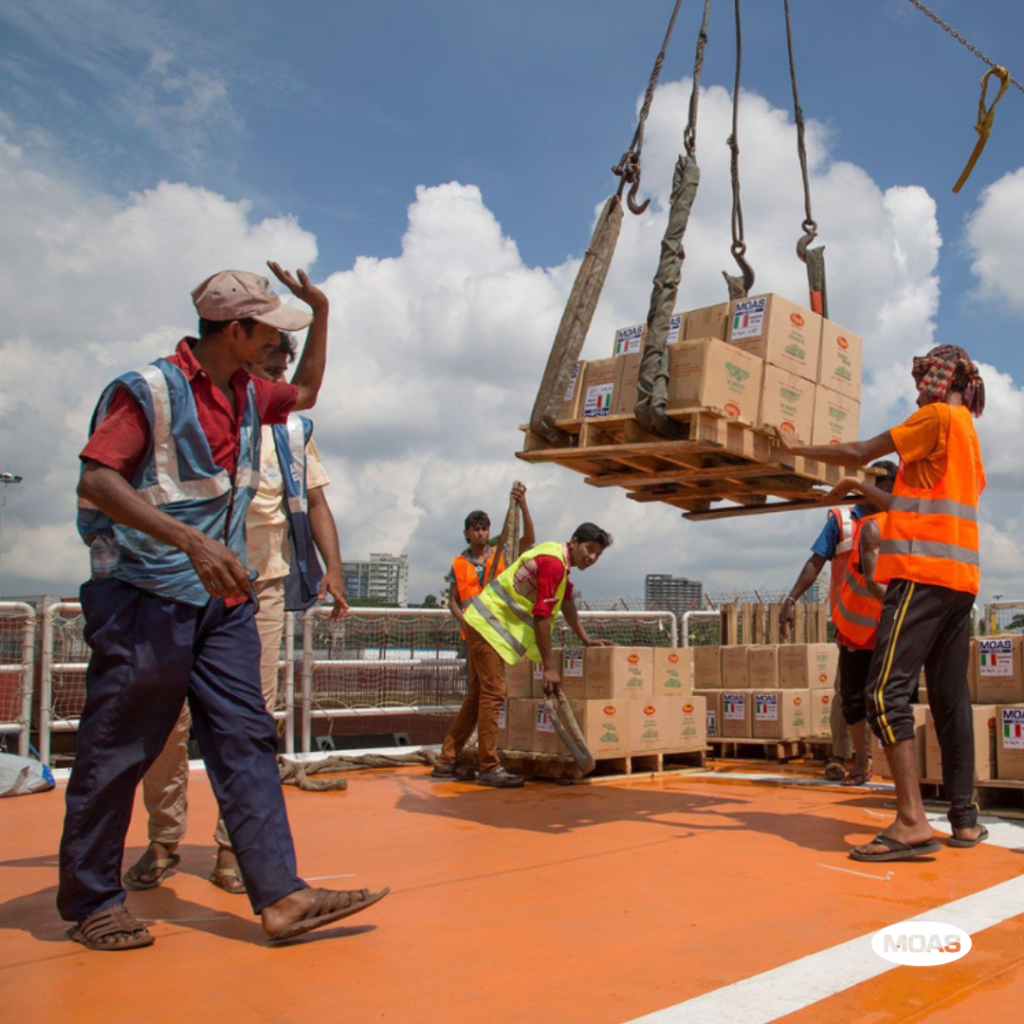The Humanitarian System Report outlines key performance measures and characteristics of the humanitarian space, that allow readers to understand how the system has adapted to emerging crises and humanitarian laws and standards are upheld in an increasingly complex world. They key areas for analysis and discussion throughout the report are highlighted below:
- How is the system performing on health, refugee crises, active conflict, reducing mortality and averting hunger?
- Does the system cause harm?
- Is the system becoming more locally led?
- Does the system have enough money? Is it resource-efficient
- What do we know about the demographics of staff and contractors at humanitarian agencies?
- How does the system comply with humanitarian laws and standards?
- Can crisis-affected people hold system actors accountable, and can they influence the decisions that affect them?
- How has the system responded to and been affected by Covid-19?
MOAS has highlighted some of the key findings of the report, which are extremely relevant for policymakers and practitioners today. We note that this edition has reflected the need to better support and promote the work of local communities in facilitating aid and development. This edition for the first time ever includes the ‘system outside the system’, which is really important. This includes diaspora, community-led efforts, and the private sector, acknowledging that international humanitarian system in a traditional sense, is just one element of support for people in crisis.
Humanitarian Needs
Over the four-year study period of this report, the global number of people recognised by the UN-coordinated Global Humanitarian Overview as needing humanitarian assistance rose by over 87%. This alarming figure highlights the impact of climate change, conflict, food insecurity, inequality and shifting power dynamics in pushing communities to the periphery and exasperating needs. Yet, as people’s needs grew, the barriers to meeting them also expanded. In many countries, we have seen a shift to the right in terms of rhetoric around humanitarianism and migration, and we have seen a rise in ‘strongman’ politics that embolden governments to reject human rights norms and standards of welfare.
Donor Aid
International humanitarian assistance (IHA) reached an estimated $31.3 billion in 2021 – which is almost double what it was a decade before. However, funding did plateau over the past four years and due to emerging crises like the Covid-19 pandemic, some funding was channelled away from ongoing protracted crises like in Yemen and Somalia, which faced cuts to aid while increasingly complex humanitarian needs. There was also instability among the traditional top donors over this period: Japan increased its aid while the UK cut its contribution by almost US$1 billion under a new government. Over this period, nearly half of humanitarian aid directed to organisations went to just three UN agencies, the World Food Programme (WFP), United Nations Commissioner for Refugees (UNHCR) and United Nations Children’s Fund (UNICEF). These funds are often passed on to implementing partners. There was a big discrepancy in need versus funding: over the decade, financial requirements for appeals nearly quadrupled. In 2020, COVID-19 drove a peak ask of $39.3 billion, but new funding was insufficient and only 51% of requirements were met – this was a record low.
Community Led Aid
Community-led aid is essential in crises. The first responders are typically people in the community affected and it is imperative the humanitarian community gives value and primacy to the needs and knowledges of people within these communities. Allowing responses and development initiatives to be guided by the community. There is still a lack of understanding on how to best engage with local efforts and to not engage with them in a tokenistic manner, however, there has been improvement. For example, why some parts of the international system are beginning to work with diaspora groups, there are complex challenges to collaboration, including trust, power dynamics, and representation.
Critique of Humanitarianism
Humanitarians operate in extremely sensitive environments, working closely with highly vulnerable communities. This comes with a high risk of causing direct or indirect harm to the people that the system seeks to support. Historically, the humanitarian system has not been good at assessing or mitigating the potential negative impacts of its activities, and there needs to be improvement on how we measure impact and ensure the voices of those we are seeking to support are actually prioritised and listened to.
Final thoughts
MOAS is a humanitarian organisation that upholds the values and standards of the humanitarian space. We have reflected on this report and continue to monitor and evaluate our projects to ensure we best support vulnerable communities. At the end of 2021, there were an estimated 59.1 million internally displaced people, more than double the number a decade before. MOAS continues to support asylum seekers, refugees, and migrants throughout our programming to respond to need and fills the gaps in service provision globally.

